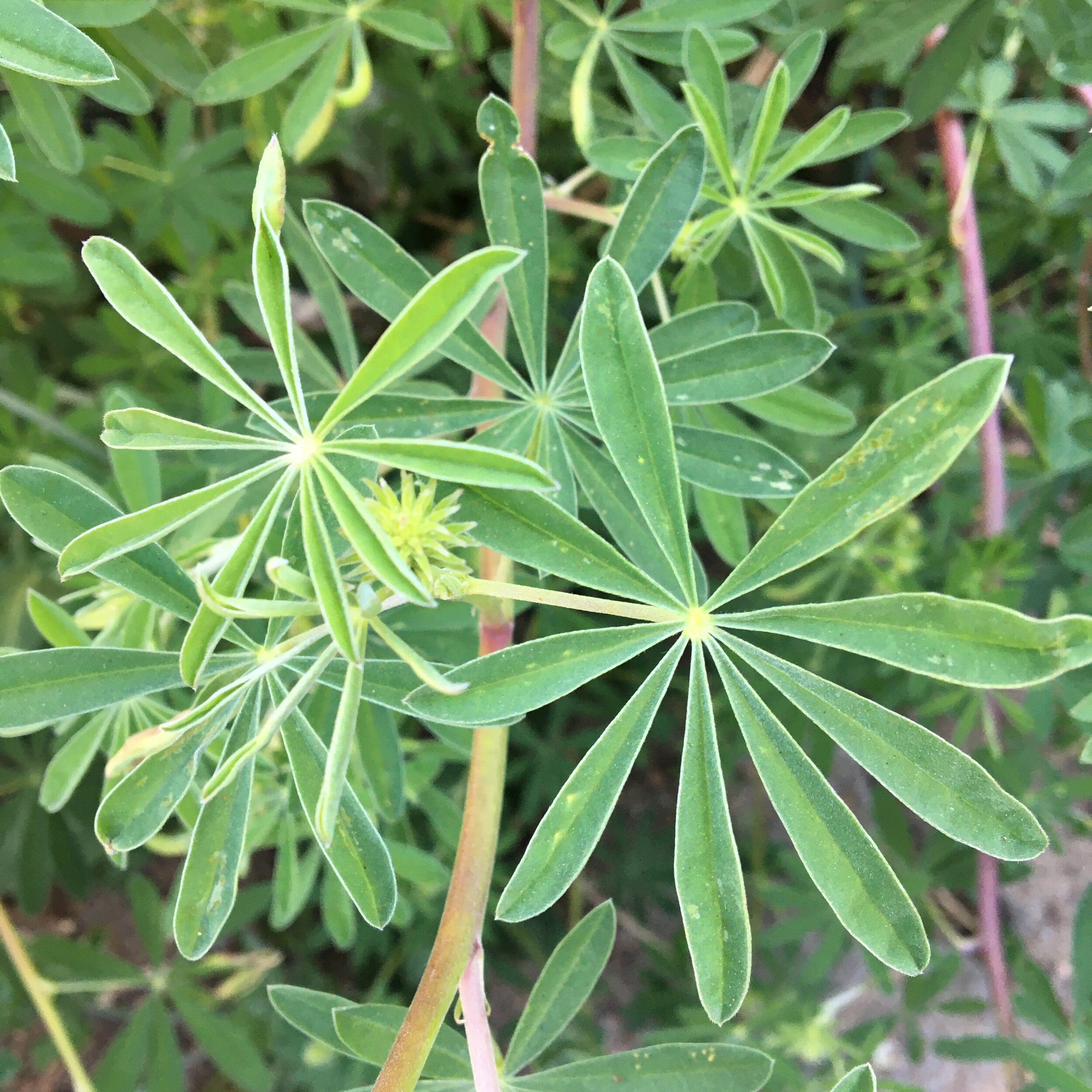Native Plant Fun Facts: The Lovely Lupine
/A graceful, vivid lupine flower cluster in GFE’s native backyard area.
This week, we focus our attention on the lupine, one gem we’re so pleased to have at GFE,and in abundance! We have several lupine plants, and most either self-seeded or sprouted from seeds sprinkled by staff in the garden’s native hillside area from a mother plant that was killed by gophers a couple of years ago.
We suspect our lupines are either Silver Lupine (Lupinus albifrons) or Chamisso Bush Lupine (Lupinus chamissonis). If you’re a lupine expert, swing by the garden sometime and let us know what you think!
The lupine’s delicate, slightly fuzzy leaves are visually captivating.
Many native California lupines are drought-tolerant and prefer abundant sun and well-draining soil. Ours just began blooming last week and are really gorgeous! The long stems of small, clustered flowers attract bees, butterflies, and hummingbirds, so you’ll get quite the show if you observe them while wildlife is visiting.
Lupines come in many sizes and shapes, and are of the Fabaceae plant family, commonly known as the legume or pea family. Some of the lupine’s relatives include acacia, chickpeas, green beans, wisteria, tamarind, and mesquite trees. The most telling Fabaceae characteristic of the lupine is that its seeds develop in pods and look like beans.
A lupine plant by GFE’s middle staircase, with its tree aloe neighbor.
One really great piece of trivia about lupines is in their name origin. Lupine has its roots in lupus, which is Latin for wolf. Lupine means “wolf-like”. But how is this plant anything like a wolf?. Well, not at all, really. The name seems to have originated from the misguided notion from long ago that lupines voraciously “wolfed down” soil nutrients. In reality, science has revealed that lupines and other Fabaceae family members are nitrogen fixers, which means that they host bacteria that absorb nitrogen from the air and fix it to nodules on their roots. The stored nitrogen is released into the soil, which is an integral plant nutrient.
We hope you have some blooming lupines near you so you can enjoy them while they’re in their full glory!





